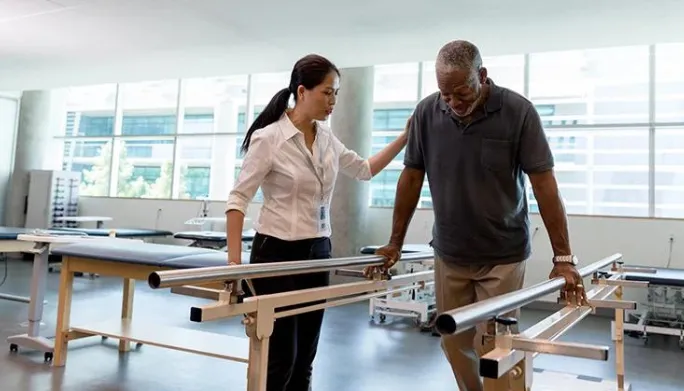In the second part of our series, “Winter’s Slippery Slope,” we turn our focus to understanding the anatomy of a fall, particularly concerning seniors in Texas. Exploring the factors that contribute to falls is crucial for tailoring interventions and physical therapy strategies that address the unique challenges faced by our older community members.
Factors Contributing to Falls:
Muscle Weakness:
Texas winters may not be harsh, but even a slight drop in temperature can affect muscle function. Muscle weakness, a common issue among seniors, contributes significantly to falls. Physical therapy interventions can target muscle groups, improving strength and stability.
Balance and Proprioception Changes:
Aging often brings changes in balance and proprioception, the body’s ability to sense its position in space. These changes can lead to unsteady movements, especially on icy surfaces. Physical therapists can assess and address these deficits through targeted exercises.
Vision Impairments:
Diminished vision, another common aspect of aging, can increase the risk of falls. Texas sunlight can be intense, affecting visibility. Physical therapists work on exercises that enhance visual tracking and coordination, reducing the impact of vision-related challenges.
Chronic Health Conditions:
Conditions like arthritis, osteoporosis, or diabetes can contribute to falls. Physical therapists collaborate with individuals managing chronic health issues, incorporating exercises and interventions that consider these conditions to promote overall well-being.
Relevance to Physical Therapy:
Comprehensive Assessments:
Physical therapists conduct thorough assessments to identify specific deficits contributing to falls. This includes evaluating muscle strength, balance, gait, and other factors relevant to the individual’s unique circumstances.
Targeted Exercise Programs:
Tailored exercise programs are designed to address identified deficits. These programs focus on strengthening muscles, improving balance, and enhancing overall functional mobility.
Fall Risk Prevention Plans:
Physical therapists collaborate with seniors to create personalized fall risk prevention plans. These plans may include a combination of exercises, lifestyle modifications, and education on safe movement practices.
Understanding the anatomy of a fall is essential for developing effective strategies that address the specific needs of seniors in Texas. Physical therapy emerges as a key ally in identifying and mitigating deficits, offering tailored interventions that enhance stability and reduce the risk of falls. Stay tuned for the final part of our series, where we’ll explore practical tips and exercises for building strength and confidence during winter. Let’s stride confidently and safely together!



